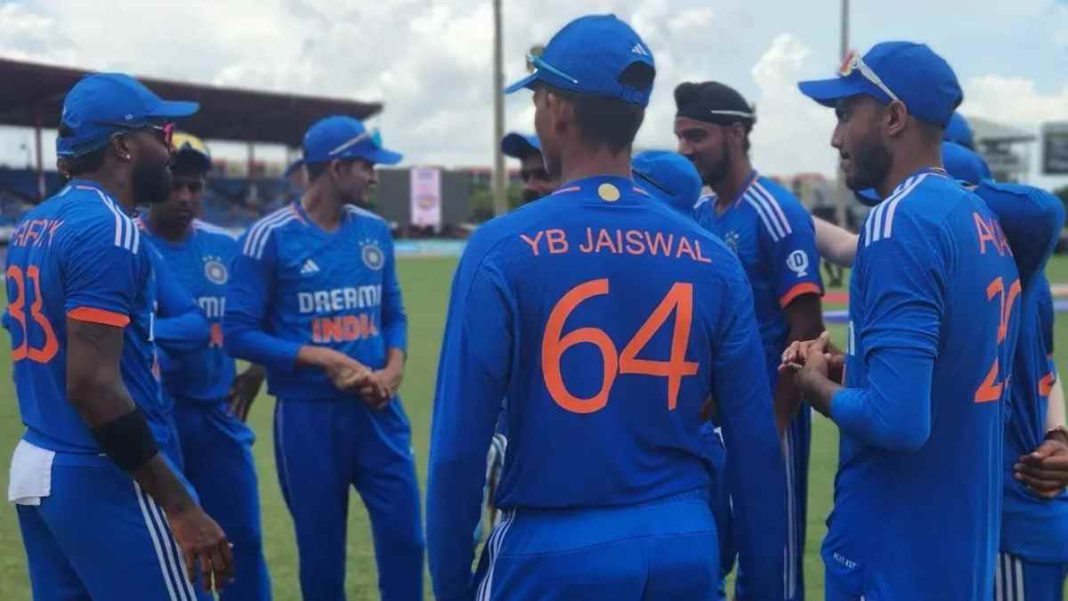WEST INDIES: The recently concluded T20I series between India and the West Indies turned out to be more than just a showcase for emerging talents. Instead, it unveiled significant vulnerabilities in India’s batting lineup and strategic approach, highlighting areas that require immediate attention as the team gears up for future tournaments, including the 2024 T20 World Cup.
The series, originally seen as an opportunity for young talents like Yashasvi Jaiswal, Mukesh Kumar, and Tilak Varma to shine after their impressive IPL 2023 performances, took an unexpected turn. Despite their potential, these players struggled to find their footing, exposing the team’s lack of consistent firepower beyond the top order.
One of the glaring issues that emerged was the dearth of batting depth in the middle and lower order. Throughout the series, India’s middle and lower-order batsmen failed to provide consistent support, leading to modest totals that were comfortably chased down by the West Indies.
In the decisive fifth T20I, Suryakumar Yadav’s heroic effort of 61 runs off 45 balls was not adequately complemented by the rest of the batting lineup, resulting in a meager total of 165-9. This further emphasized the importance of a solid batting lineup capable of building and capitalizing on strong starts.
The series loss also shed light on India’s squad selection, sparking debates on whether the team management missed an opportunity to include IPL standouts with all-round capabilities. The absence of players like Shivam Dube, Venkatesh Iyer, and Washington Sundar, who have proven their worth in both batting and bowling, raised questions about the composition of the squad and the balance between specialist batsmen and all-rounders.
The use of players out of their preferred positions added another layer of concern. Sanju Samson, despite achieving the milestone of 6,000 runs in T20 cricket, struggled in the series when asked to bat at No. 5, a position he hasn’t been accustomed to in recent times.
This instance highlighted the importance of aligning player roles with their strengths, suggesting that utilizing players in positions where they have a proven track record can maximize their contributions.
Addressing these issues, Indian coach Rahul Dravid acknowledged the lack of batting depth and stressed the need to find players who can perform under pressure and bolster the lower order. Dravid’s sentiments echoed through cricket experts, including Wasim Jaffer, who suggested that the team might need to lean towards all-rounders who can provide depth and versatility.
As the Indian cricket team reflects on the lessons learned from this series’ defeat, the focus is set on the future. While losses can be valuable learning experiences, rectifying the batting deficiencies and aligning player roles will be paramount as India prepares for the upcoming challenges, most notably the 2024 T20 World Cup.
The series loss in the West Indies might have exposed the chinks in India’s armor, but it also provides an opportunity for the team to regroup, reassess, and recalibrate their approach to ensure a more balanced and potent batting lineup in the time to come.
Also Read: Virat Kohli Praises Babar Azam as “Top Batter Across Formats” in Recent Interaction



